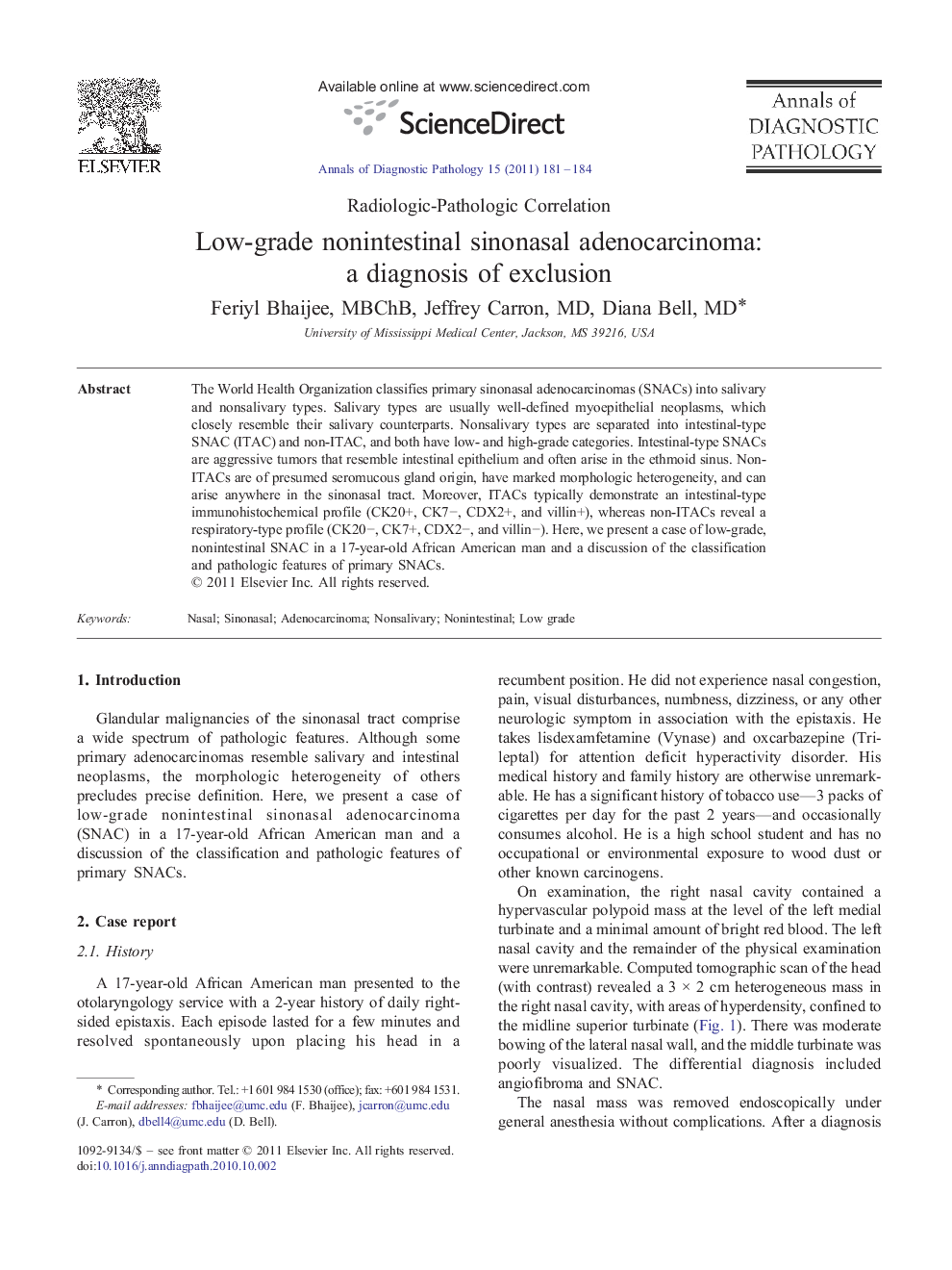| Article ID | Journal | Published Year | Pages | File Type |
|---|---|---|---|---|
| 4130472 | Annals of Diagnostic Pathology | 2011 | 4 Pages |
The World Health Organization classifies primary sinonasal adenocarcinomas (SNACs) into salivary and nonsalivary types. Salivary types are usually well-defined myoepithelial neoplasms, which closely resemble their salivary counterparts. Nonsalivary types are separated into intestinal-type SNAC (ITAC) and non-ITAC, and both have low- and high-grade categories. Intestinal-type SNACs are aggressive tumors that resemble intestinal epithelium and often arise in the ethmoid sinus. Non-ITACs are of presumed seromucous gland origin, have marked morphologic heterogeneity, and can arise anywhere in the sinonasal tract. Moreover, ITACs typically demonstrate an intestinal-type immunohistochemical profile (CK20+, CK7−, CDX2+, and villin+), whereas non-ITACs reveal a respiratory-type profile (CK20−, CK7+, CDX2−, and villin−). Here, we present a case of low-grade, nonintestinal SNAC in a 17-year-old African American man and a discussion of the classification and pathologic features of primary SNACs.
